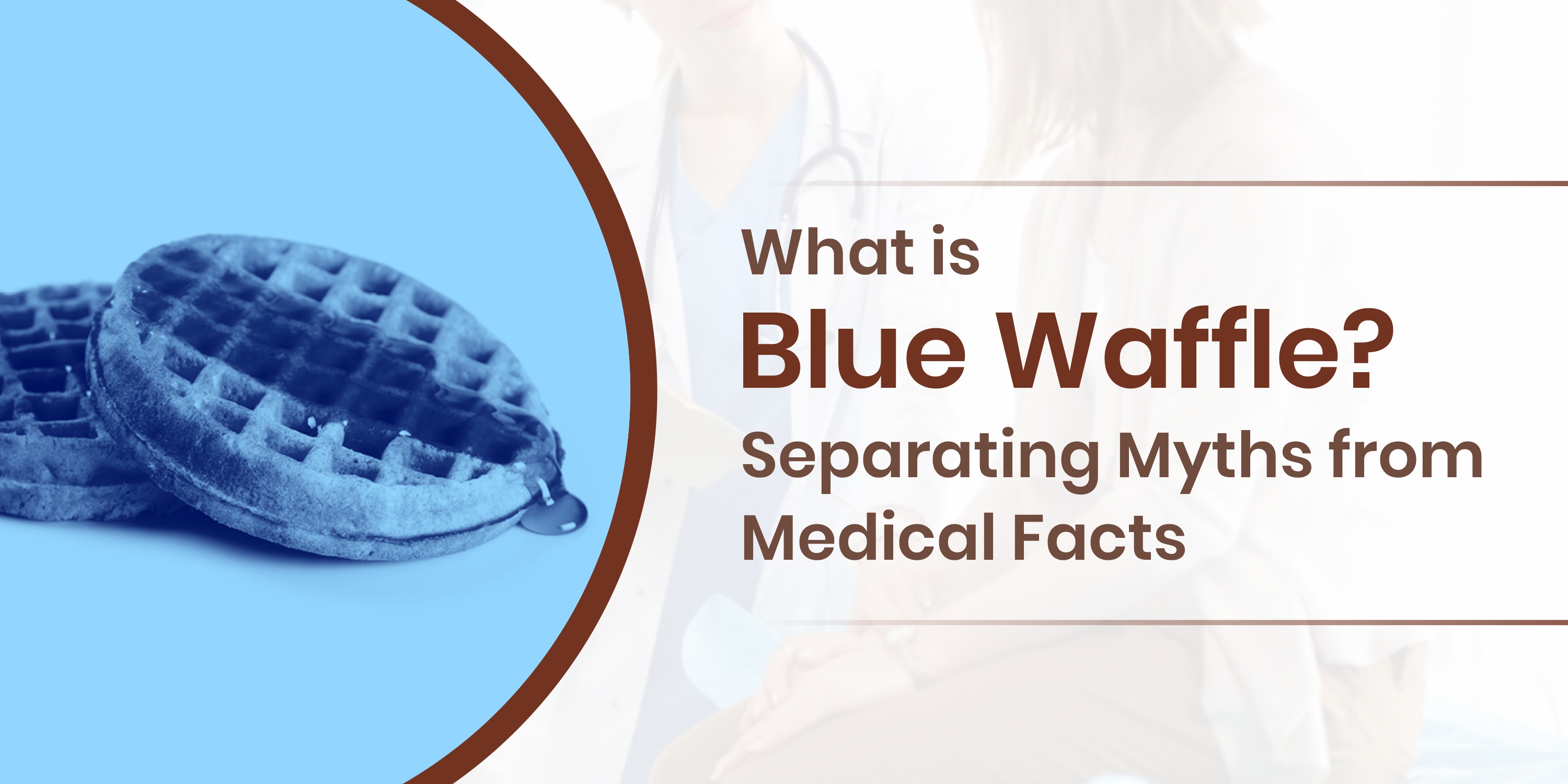What is Blue Waffle? Separating Myths from Medical Facts
Curiosity about the term “blue waffle” has piqued interest, and has raised meandering medical eyebrows too. If lurid blue waffle images or posts have crossed your social media feeds, you are not the only one. However, how much of it is true? In this blog, we unfold the mystery and the truth about it, answering: what is blue waffle, and is it real?
Origin of the Term “Blue Waffle”
The term “blue waffle” gained notoriety in the early 2000s along with grotesque images. The “Blue Waffle” was purported to be a sex-related issue with the vagina turning blue, maimed or festering.
The only fact is don’t worry, you are not infected with any “imagined” diseases that the wandering web describes, it is true that blue waffle has no medical recognition nor has principles of any scientific data.
What is blue waffle? The myth stems from the internet, a fictional illness that has no support of facts, mostly bluffs.
Blue Waffle Not a Disease
Contemplating whether blue waffle is a hidden, rare sexually transmitted disease? The fact is, it is not fake, there are no underdiagnosed diseases of that kind, and blue waffle does not qualify as a disease. Medical professionals, gynaecologists, or health researchers have all confirmed that no illness, whether viral, bacterial, or fungal, exists that could give rise to the symptoms associated with blue waffle. Moreover, the American Medical Association and other relevant organisations have blue waffle as one of the most harmful STD myths ever propagated on the internet.
What Has Not Led to Its Demise?
For proving it wrong with proper evidence, the words “what is blue waffle” continue to be searched quite frequently. The following points summarise the main reasons:
- Fear: Online clickbait that sounds shocking attracts a lot of attention.
- Absence of genuine sex education sources: The internet has become the primary health information source for most teens and young adults.
- Memes and fake health information: The fast spread of health misinformation enabled by social media and online forums.
- Misinformation spread using photo manipulation: The use of staged and altered images to trick viewers.
Myths that are easy to believe are constructed using real sexual health terms and graphic visuals.
Actual Health Problems That Are Misunderstood
Although the blue waffle myth does not exist, there are genuine infections and STDs that diagnostically manifest as discomfort, discharge, pungency, or even colour changes of the skin around the genitals. These are:
- Bacterial Vaginosis (BV) A common ailment as a result of an imbalance of the microflora in the vagina. It may produce a fishy odour or greyish discharge — but not blue colouring.
- Yeast Infections Due to overproduction of the fungus Candida. Fungal infections will manifest as itching and burning, and thick white discharge. Again, no blue symptoms.
- Genital Herpes A real STD that can manifest as sores or blisters around the genitals. Painful, but not blue or deformed like the fake blue waffle posts suggest.
- Trichomoniasis, Gonorrhoea or Chlamydia
These sexually transmitted infections can cause some degree of inflammation and abnormal discharge — but they do not add to the blue waffle symptoms.
Nobody should feel guilty or afraid due to these infections, as they can be easily approached with a medical professional.
Why Health Myths Asking Blue Waffle Matter?
Wondering what does blue waffle mean might be dangerous. But myths about different aspects of life can be a hazard in the following ways:
- These Health Myths Alter Reality
- These myths can be problematic in the real world.
- They result in errors of self-evaluation
- There are those who would ignore genuinely healthcare issues, presuming they are suffering from something like blue waffle.
- They add to the stigma
Due to embarrassing, misleading, or graphic content online, women may feel too embarrassed, ashamed, or too afraid to seek assistance.
They sidetrack genuine health problems.
People are stuck in sensational stories or legendary narratives, as opposed to studying common STDs or infections.
This is the reason why professionals in the health field emphasize the need to use credible information.
What to do When a Neighbour Asks You About It?
If a neighbour or an online acquaintance comes to you asking about blue waffle, this is what you should tell them POSITIVELY.
- Make sure it is not real – Make them aware that there is no scientific evidence or medicine that has acknowledged this on the internet.
- Provide credible references – Direct them to public health or official guides on STDs.
- Promote correct information – For those who may be worried about real issues, advise them to discuss it with a doctor.
- They should not circulate bizarre photographs – These images can be edited and in their edited forms could add to the distress or suspicion.
Checking Health Information Sources Online
There are a lot of articles on the internet and it can be hard to differentiate true articles from fake ones. Use the following guidelines to check if a health claim is real:
- Look for information from verified sources like WHO, CDC, or government health websites.
- Forums and memes do not provide reliable information. Avoid obtaining medical facts from image searches and memes.
- You can seek clarification on health terms or symptoms from a licensed doctor.
- Do not self-treat based on unverified posts or videos.
Final Word
In summary, if the question being asked is what is blue waffle? The response is that it is a hoax. There has never been a disease like that and no condition which has been flagged as blue waffle has corresponding symptoms.
Stop worrying about these fake diseases and seek to understand them. Your body requires the medical care of trusted specialists and not worrying about fabricated conditions.
FAQs
Q 1. Is blue waffle a real STD?
- No, it is a term that has been coined and is nonexistent in the medical field.
Q 2. Can a vaginal infection give someone blue skin?
Infections can result in some inflammation and discharge, but not blue skin.
Q 3. What keeps people attached to blue waffle?
One of the strangest things to come out of the internet is the blue waffle and what keeps it alive is bizarre images, myths and, incredibly, it doesn’t even exist.
Q 4. What is the best place for someone to go to if they are having symptoms?
The best place to go is a qualified gynaecologist or a professional in the field of sexual health. It is not a good idea for them to depend on images from the internet or unproven advice.


























.jpg)
.jpg)